Related Tags
How to buy a vintage Fender Stratocaster
Many of us dream of owning a vintage Fender Stratocaster but distinguishing Relics and fakes from the real deal requires an in-depth knowledge of timelines, manufacturing processes and arcane details. Here’s our guide to authenticating vintage Stratocasters.
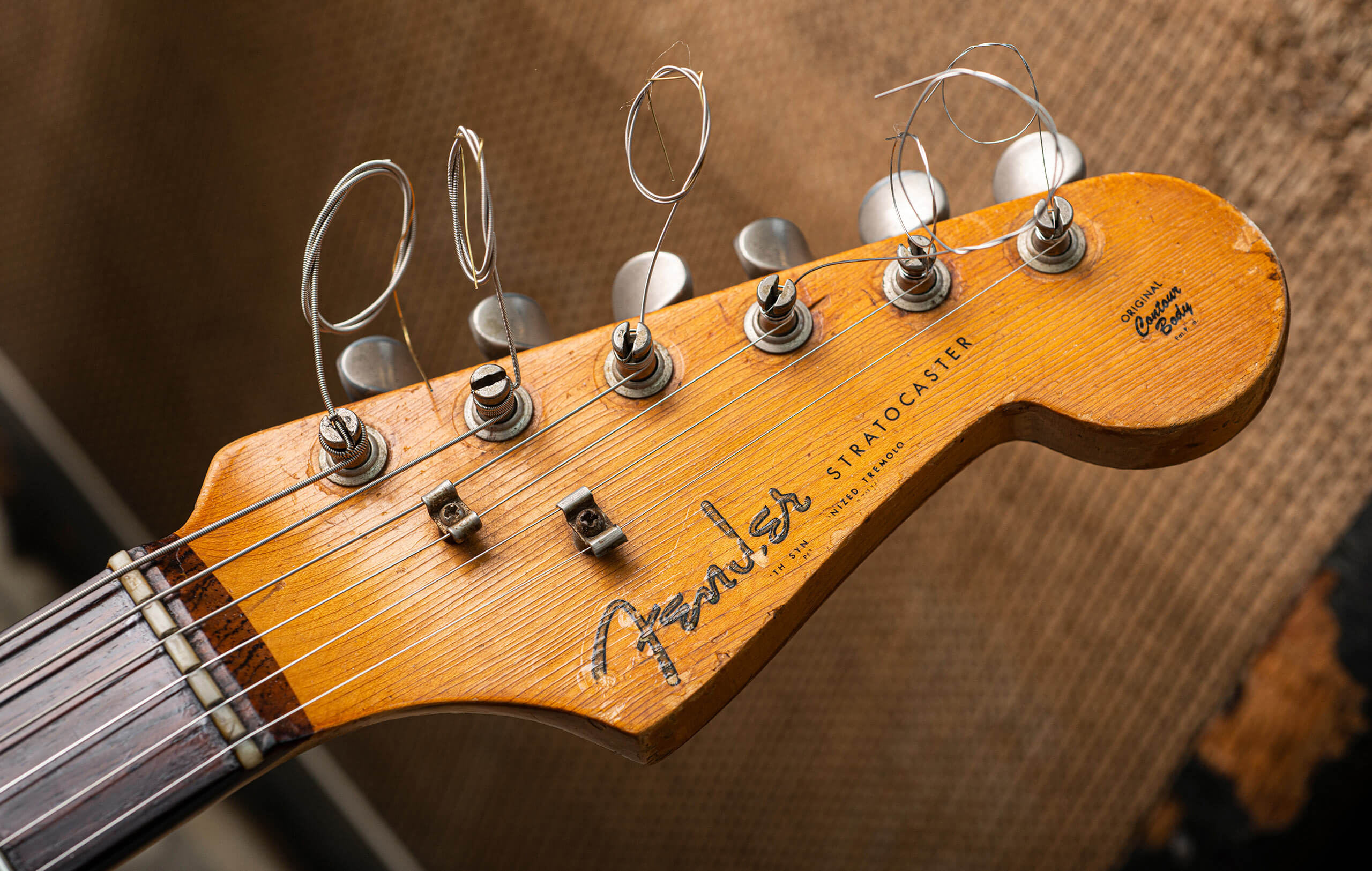
Image: Eleanor Jane
The demand for vintage Stratocasters has never been higher, and neither have the prices. Authenticating them is fairly complex and even if you can verify the constituent parts, there’s no guarantee that they all left the Fender factory on the same day.
- READ MORE: The best S-style guitars to buy
Ideally a vintage Strat will come with provenance, and perhaps photographs taken over the decades, but it’s rarely the case. Serial numbers cannot be relied on without corroborating evidence, and it’s important to check if all the features correspond with the supposed manufacturing date.
From a player’s perspective, so long as you are clear about what you’re buying and the guitar is priced accordingly, there’s nothing wrong with ‘assembled’ or refinished vintage Strats. But whether you are in the market for a player-grade example, an all-original collector’s piece or simply searching for vintage parts for restoration purposes, this guide will help you identify the key features.
Neck construction
The ‘one-piece’ maple necks of 1954-59 have truss rods installed via a channel routed in the back. A strip of walnut was used to fill the channel, with a walnut plug on the front of the headstock.
In 1958, Stratocaster necks acquired slab rosewood fretboards and front-loaded truss rods with no walnut strip or plug. The maple’s upper surface was left flat and the fretboard was radiused after being glued on top. The slab should just skim the top of the trussrod nut hole and if there’s any maple between the hole and the join line, the neck probably isn’t genuine.
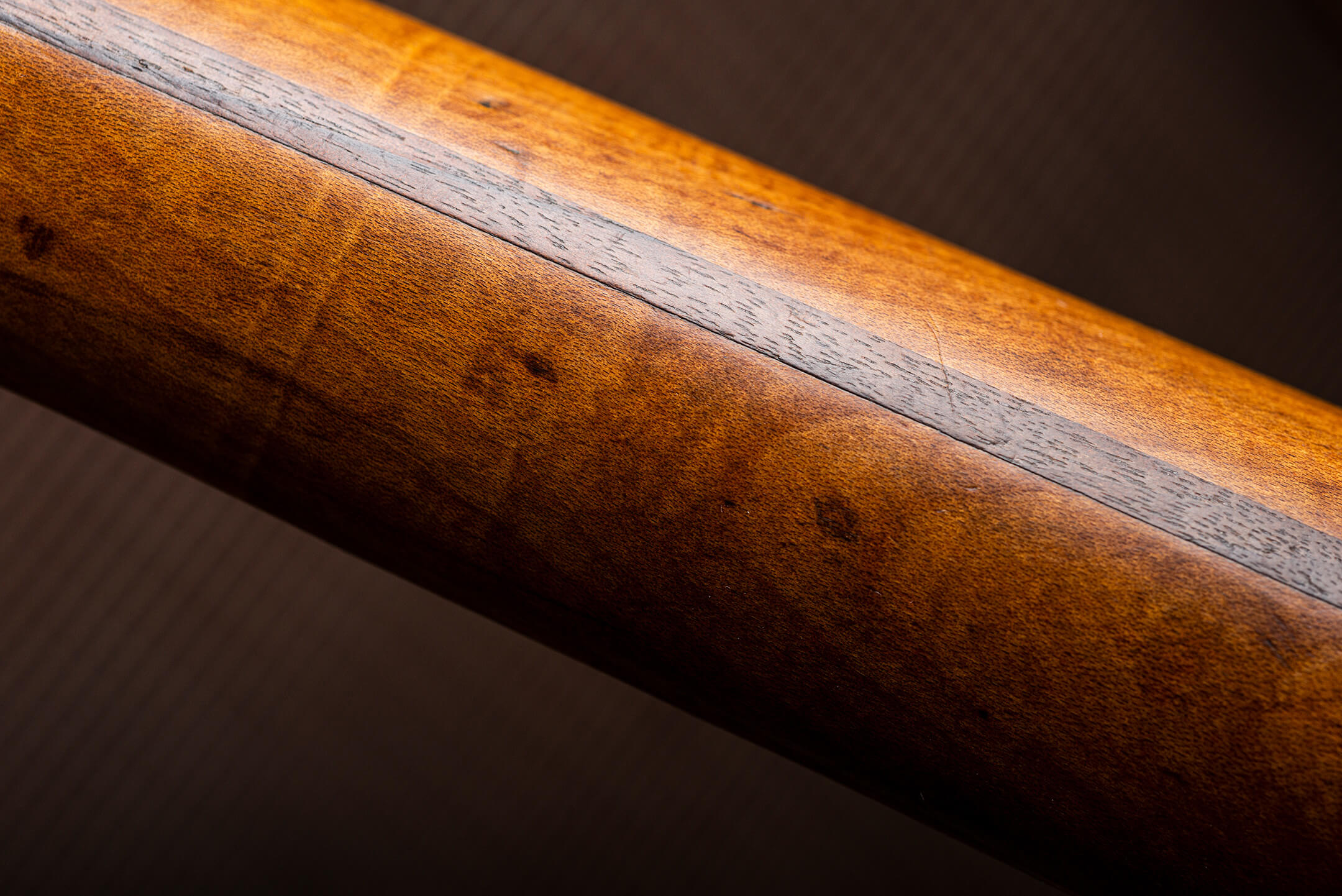
Fender introduced veneer or round-lam fretboards in July 1962, with thin rosewood glued over radiused maple. The earliest veneers were the thickest and Fender retained veneer ’boards throughout the remainder of the vintage era. Neck dates at the body end were pencilled on up to 1962 and stamped from 1962. Fender stopped dating necks for a brief period in 1959.
Pre-CBS rosewood ’boards had ‘clay’ dots but there’s no consensus on the actual material Fender used. They may appear grey, slightly beige, brown or off-white depending on condition and playwear. 1964 and 1965 necks may have clay or celluloid dots, but celluloid quickly became standard. Maple ’boards remained available by special order after 1958, but they were glued on like rosewood slab ’boards.
Fender installed frets sideways and they should really come out the same way. If you see chips around the frets, they’re probably replacements. Look for sharpened tangs on the treble side – they should appear thinner than the bass side tangs if they’re original.
Router templates were used to cut the neck outline and they were secured using pins. If you’re assessing a vintage neck, look for pin holes under the D tuner and on the heel. Also look for a mark on the underside of the heel, like it has been punched with a crosshead screwdriver.
Some vintage-style necks manufactured in Japan can look very similar to 1950s and 60s American necks. If in doubt, remove the truss-rod adjustment nut and see if an American nut will fit. Japanese nuts are metric, so they are incompatible with imperial threads.
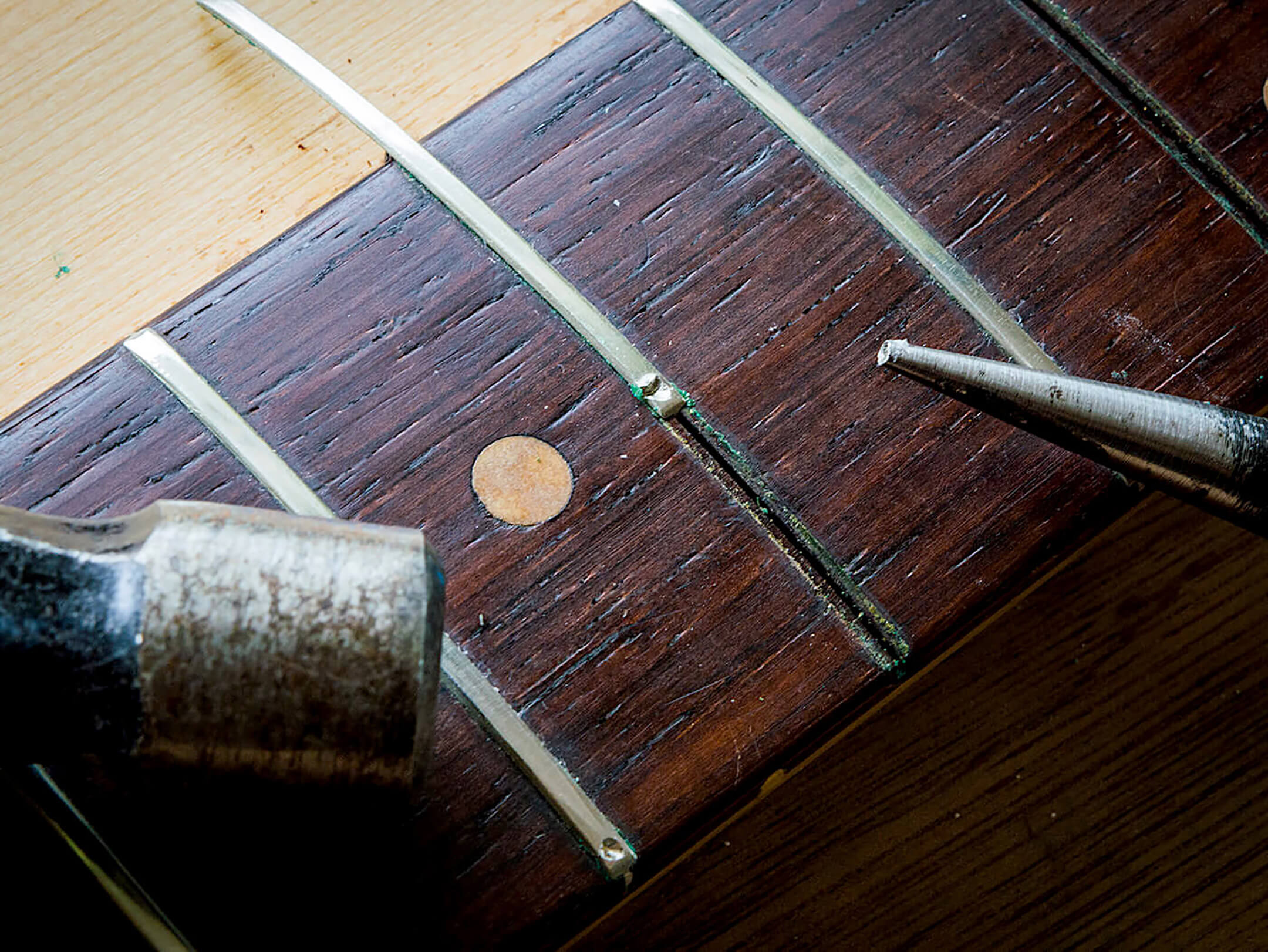
Neck profiles
Neck profiles vary, but there are some general guidelines. Between 1954 and 1956, Strat necks were quite full and rounded. In 1956, Fender refined the profile to a soft V, which became a harder V in 1957. The V-necks are often quite full, but slimmer examples can be found.
The V-shape softened towards the end of 1957 and in 1958 changed to a slimmer D-profile, which was retained through 1959 after the rosewood ’board was introduced. The profile became a thinner C for 1960 and the C filled out later in 1961.
Early veneer necks feel quite chunky compared to 1960s and 1961 examples. The veneer thinned in 1963, with the necks feeling slimmer too, but they started to thicken up again in 1964 and had less of a taper.
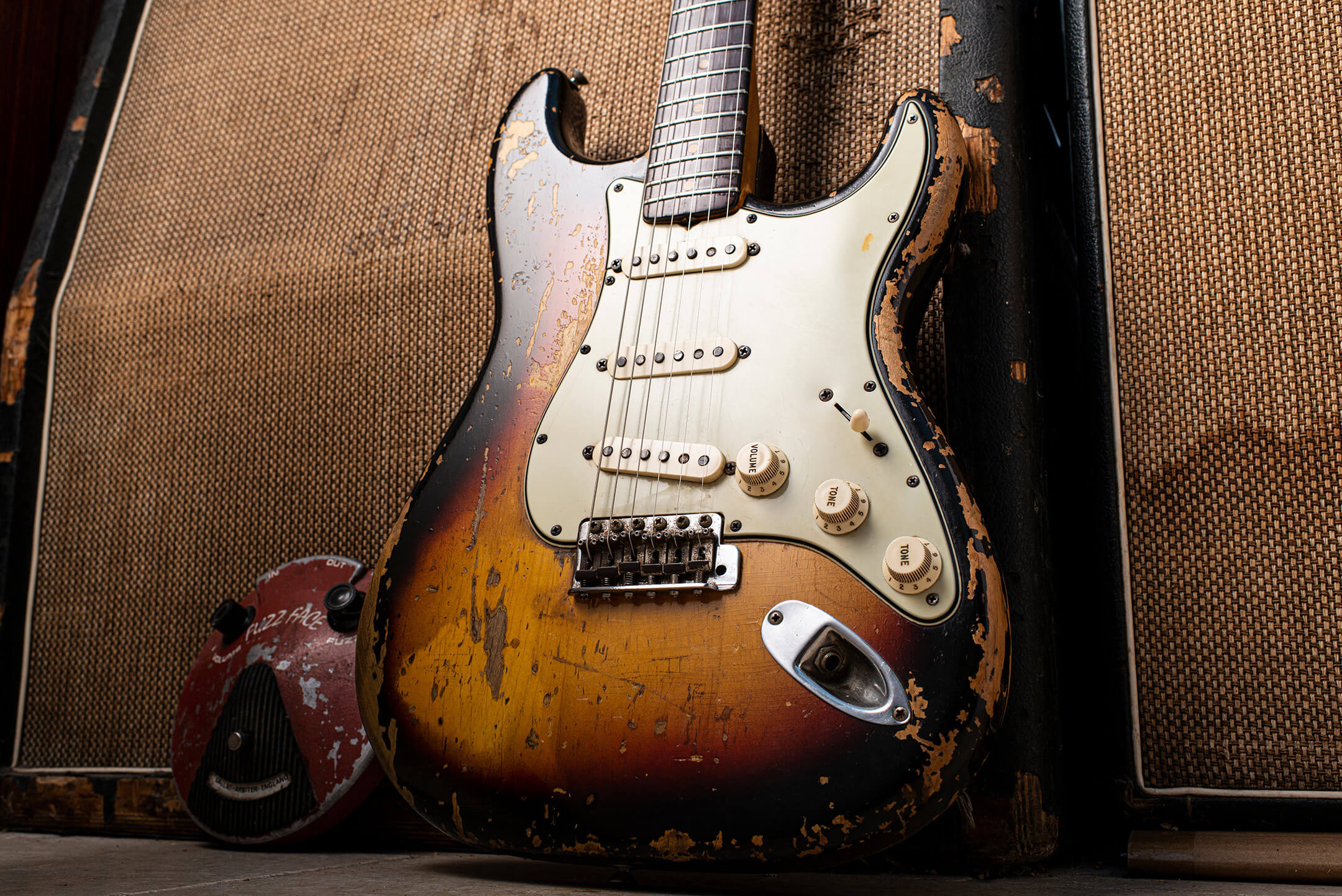
Headstock heads-up
Stratocaster and Jazzmaster necks are interchangeable, and since Jazzmaster headstocks are both longer and wider than a Strat’s, some have been reshaped and given reproduction decals. If this has been done competently, conversions are hard to spot.
All Strats had just one string tree until 1972, although it’s very common to see evidence of second trees having been added to vintage Strats. Round trees were used until late 1956, when Fender switched to the ‘butterfly’ design. A metal spacer was introduced in 1959, which changed to nylon in 1964.
Pay attention to those walnut truss-rod plugs. The vintage ones tended to be short and stubby. Most Japanese necks and USA reissues look elongated in comparison.
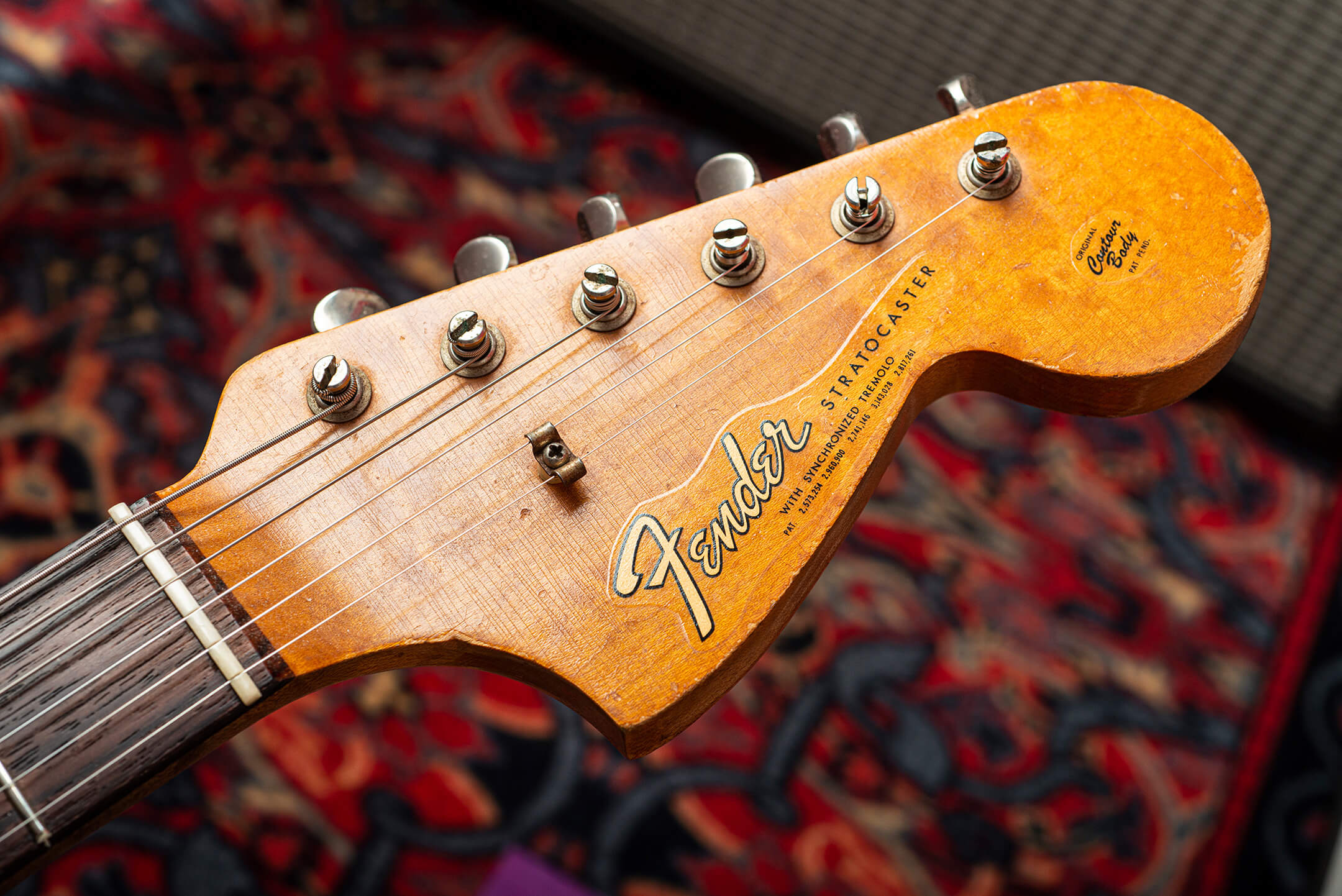
Devil in the decals
Vintage decals were applied over the lacquer and if you run your finger across the gold lettering, you should feel a raised surface. That’s because the originals were silkscreened, and modern replicas feel smooth and flat.
The gold contained metallic particles that tend to darken and green with age – just like a Les Paul Goldtop. Although some vintage decals look bright and new, most show some oxidisation.
Also check that the decal’s patent numbers match the supposed year of the neck. From 1954 until 1960 there were no numbers, then two numbers featured on the bottom of the decal from 1961 to 1962. A third was added from 1963 until late 1964, when the ‘transitional’ logo appeared. The black ‘synchronised tremolo’ logo was introduced in 1967.
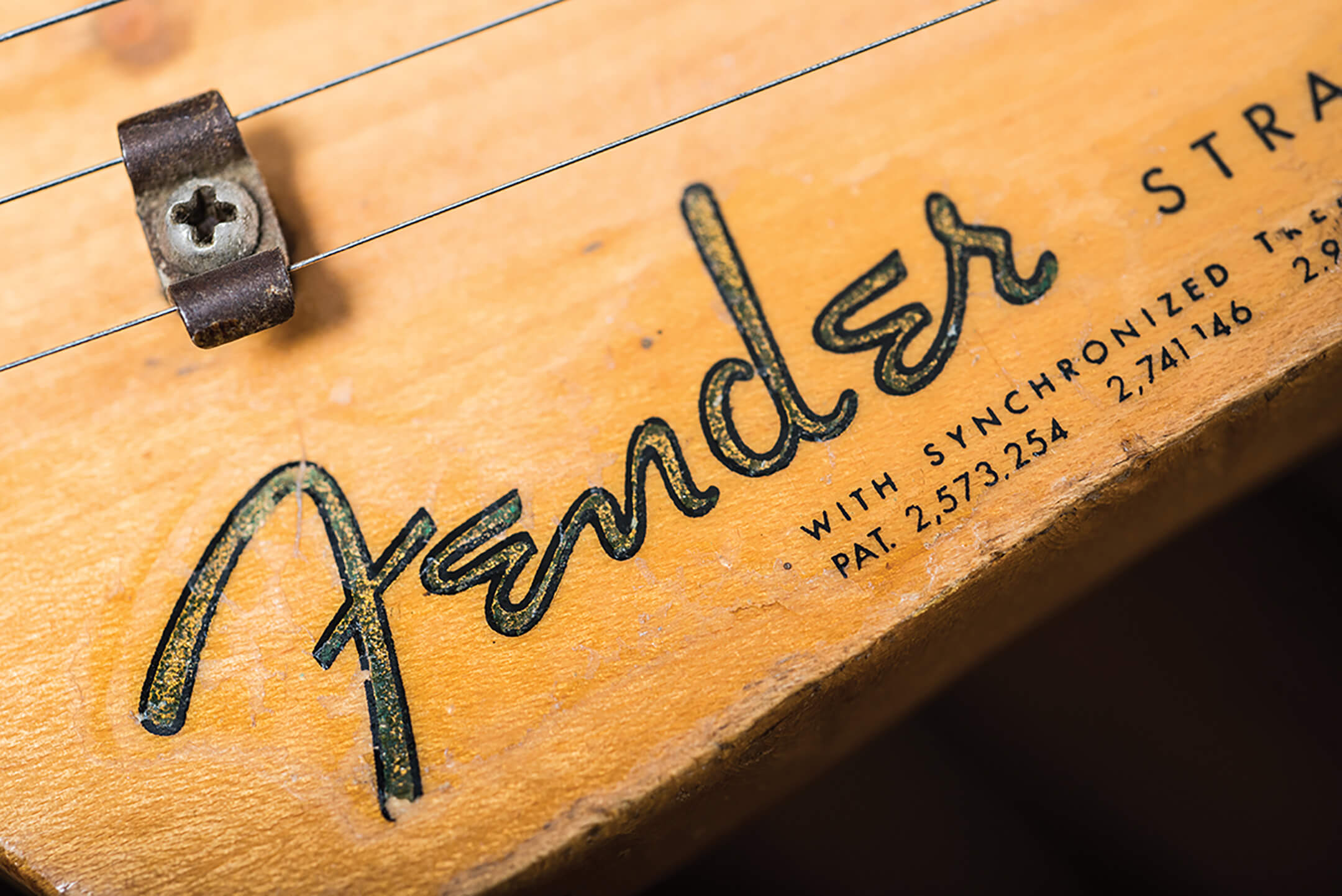
Body construction
There were considerable variations during the period from 1954-1970. The overwhelming majority of Strat bodies were ash or alder. Mahogany, sassafras and korina were used too, but examples are extremely rare. Ash was standard until the latter half of 1956, when Fender changed to alder.
Ash continued to be used under translucent blonde finishes, such as Mary Kaye models, and some sunbursts. It’s occasionally seen under custom colours too. With sunburst and blonde finishes, you may find a pencil date in the spring cavity or pickup routs.
Over the years, Fender changed various things under the pickguard. For the earliest rosewood-’board models, Fender retained the single-ply pickguard with eight screws. The three-ply celluloid ’guard with 11 holes was introduced around mid-1959, and a shoulder was added in the control cavity behind the switch to accommodate an extra screw.
The pickup routs also acquired a squarer look towards the end of the 1960s and body contours varied. The rear comfort contour was far wider on pre-CBS Strats, extending further onto the upper horn. For a period staring around 1956, the upper edge of the ribcage contour and the rear edge of the forearm contour are very thin. Strat bodies gradually began bulking up from late 1963 onwards.
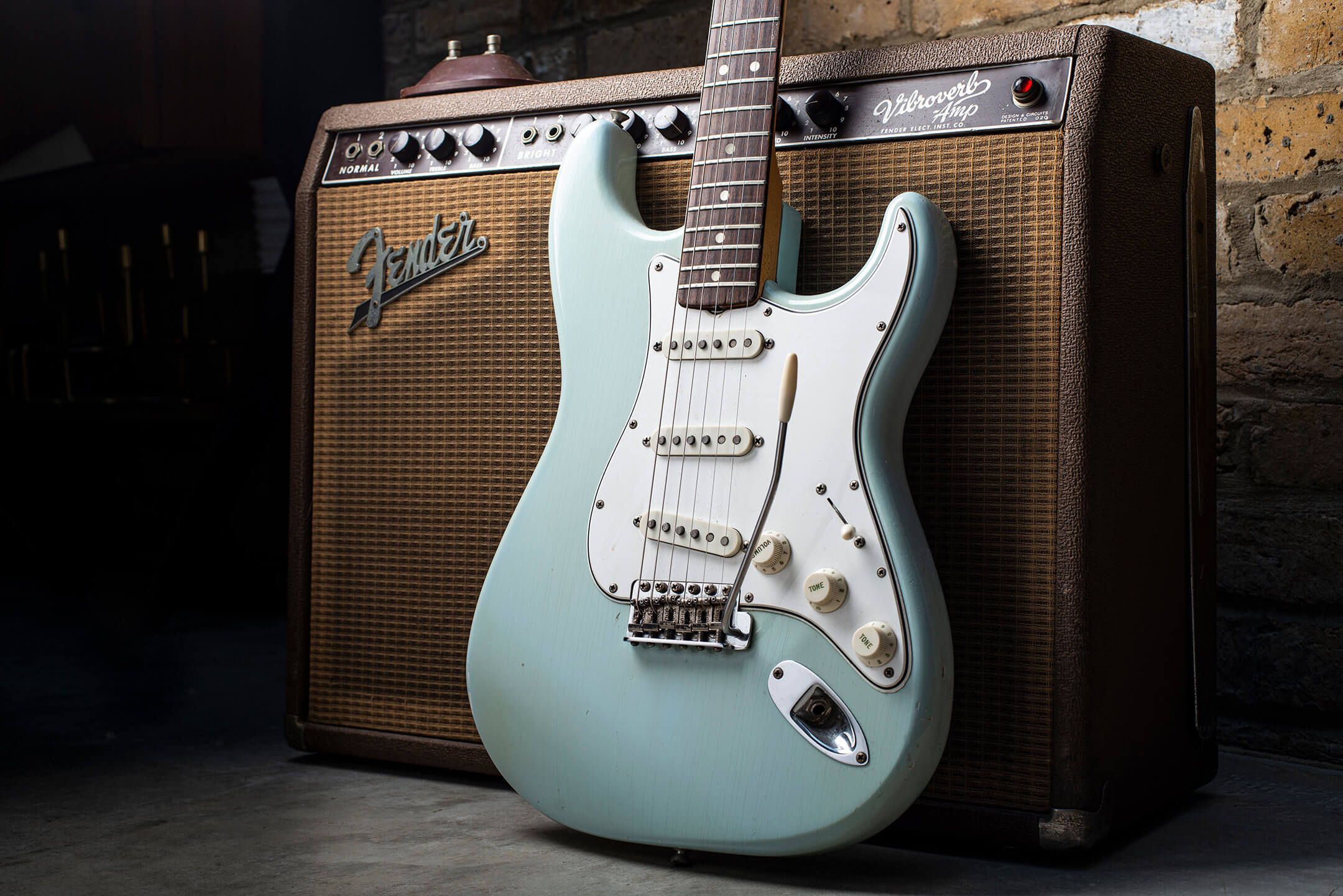
Vintage-era bodies also have filled holes; two each on the front and back. Fender’s routing templates had locating pins to secure them onto the body blanks. When the template was lifted off, the 1/8” diameter holes were filled with dowel and then levelled.
They’re easiest to spot on stripped bodies but even through lacquer, the dowel outlines can usually be seen and the dowels are always in exactly the same place. On the front they’ll be close to the pickguard screw hole that’s adjacent to the bass side of the neck pocket and about 20mm from the body edge, somewhere between the strap button and jack plate. On the back they’re about 22mm from the bass side of the neck plate and 20mm from the body edge, almost directly in line behind the vibrato block cavity’s treble side. If you can’t see them, consider it a warning.
Strat bodies that date from before the autumn of 1964 should have three or four 1/16” nail holes on the front. Fender used the nails as spacers when spraying. Check near the neck pocket next to the jack plate’s outer screw, and between the bridge and bridge pickup cavity on the bass side. You’ll see them on stripped bodies too, but if the finish is supposed to be original and there are no nail holes, something is amiss.
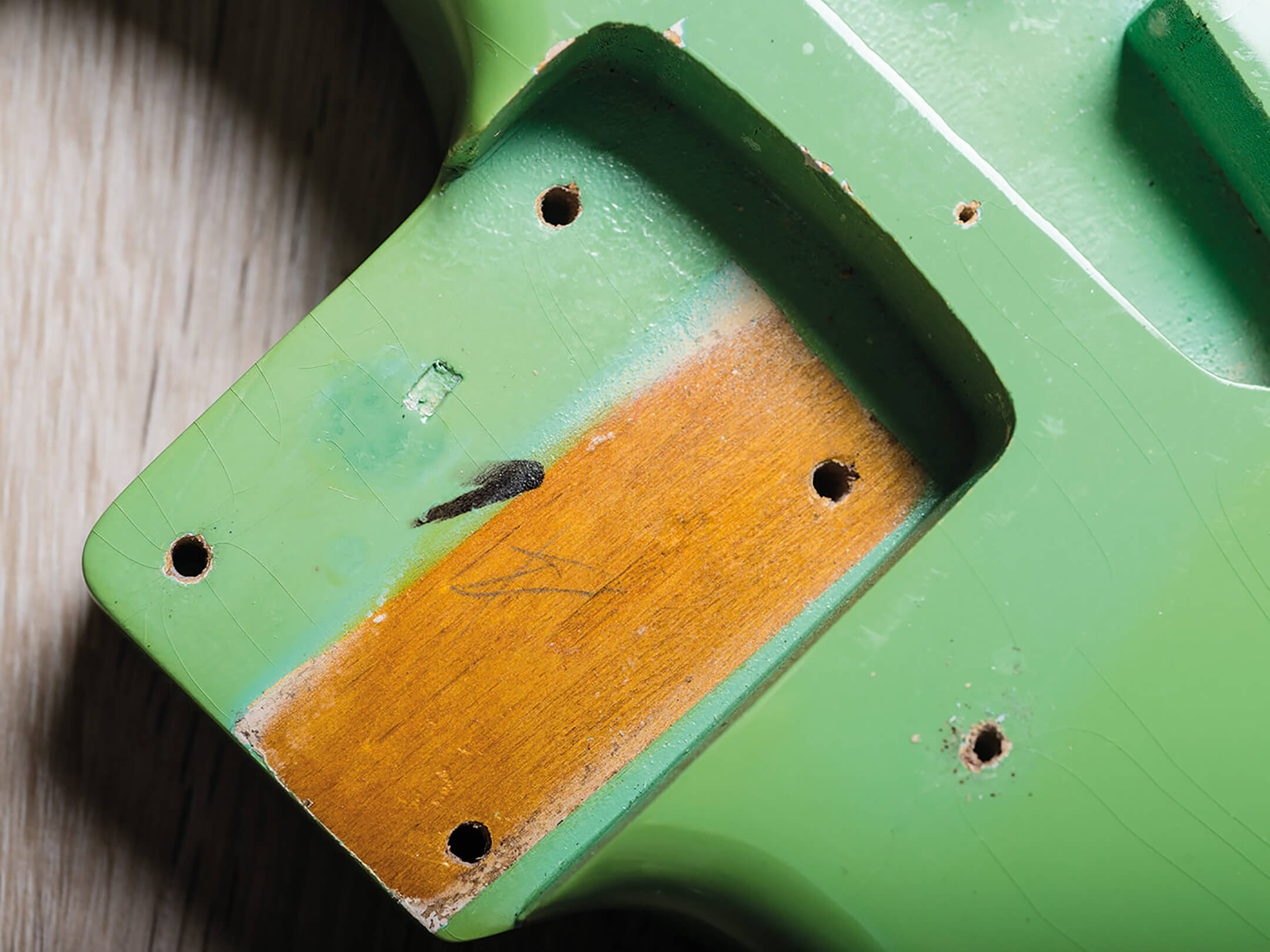
Paint jobs
Until 1968, most vintage-era Strats had nitrocellulose finishes but there are exceptions, including the sparkle finishes and many of the custom colours, which were acrylic with nitro top coats. From 1955, unless they were blonde, Fender stained bodies yellow before finishing – irrespective of the intended colour.
From 1955, Fender used a sealer called Homoclad and from 1963 they applied a clear polyester sealer coat called Fullerplast that’s easy to see under the top coats. If you can see grey primer under the colour coats, you can assume it’s a refinish.
Always check the neck pocket. If the guitar predates 1963, you can expect to see paint covering the neck cavity. In 1963, Fender began fixing a ‘paint stick’ to the bass side of the neck pocket, which shielded that area from the finish.
When authenticating vintage finishes, blacklighting has its uses, but you’re more likely to discover what a finish isn’t rather than confirm what it is, and it cannot confirm the originality of a finish. It can show up repairs and overspray, but many refinishes are decades-old and glow like 1950s and 60s finishes.
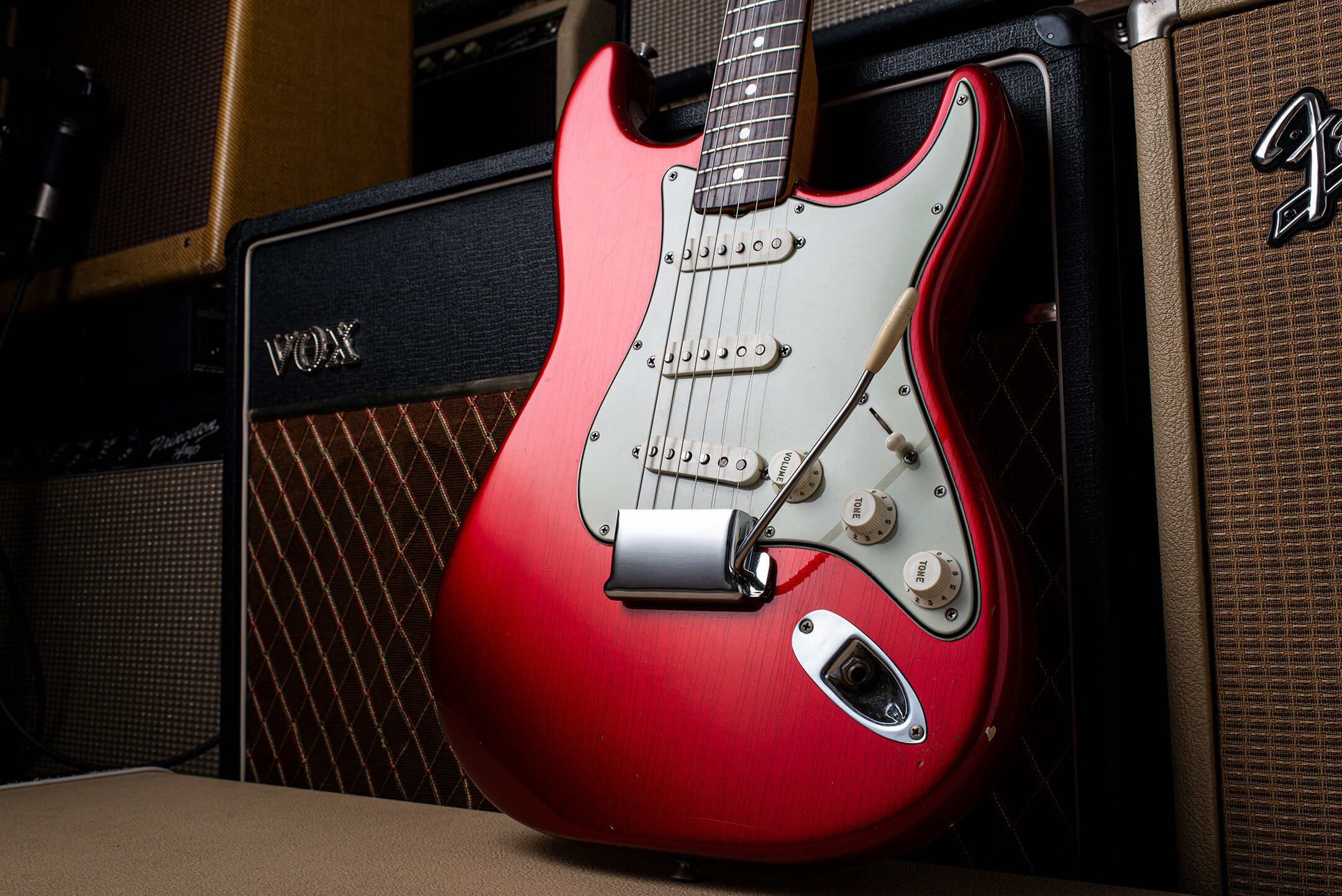
Sum of its parts
Kluson tuners were standard from 1954 until late 1967, when Fender-branded tuners were introduced. Until 1956, Kluson tuners had no lettering on the rear casing. From 1956 until 1964, single-line tuners had the word ‘deluxe’ stamped along the centre. This changed to a double-line ‘Kluson deluxe’ stamp in 1964. You can usually distinguish reproduction tuners because the casing is deeper and the gear washer will be nylon rather than metal. The rear plates had ‘pat applied’ stamps until 1958, and thereafter had patent number stamps.
Until 1970, Stratocaster bridge saddles were made from pressed steel and had ‘pat pend’ stamps. Look for tooling marks that appear like scratches on the flat area above the intonation screw hole. The grouping is always the same and you should look for a smaller group dead centre – assuming they’re not too badly corroded.
Look for rough edges on bridge plates because repros tend to be smooth. The vibrato block should be steel, so a magnet will stick to it, and you can test if a USA vibrato arm with an imperial thread will screw in. The spring claw should measure 2 inches across at its widest point.
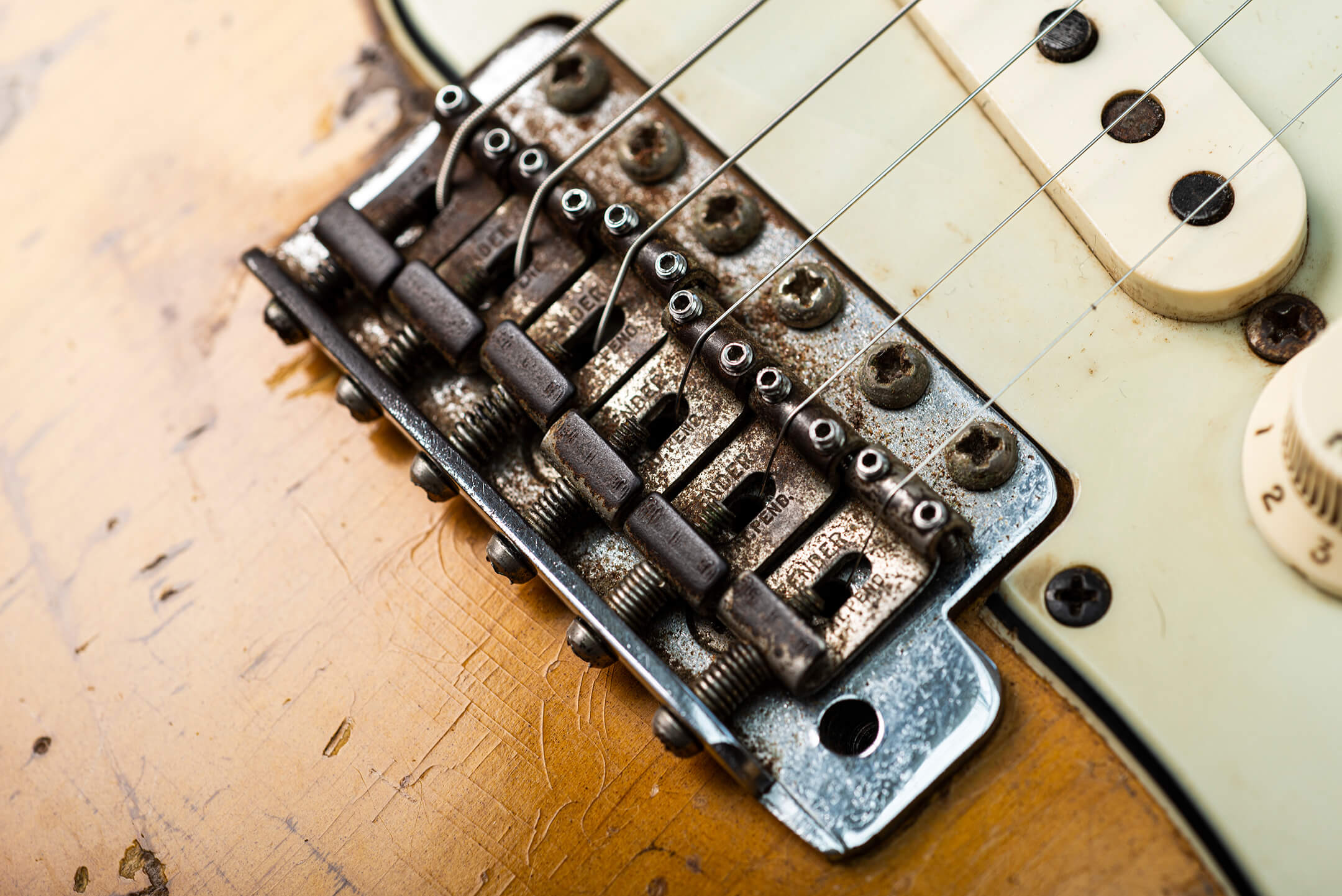
Plastics fantastic
Vintage-era pickguards fall into three categories, but there are subtle variations within that. The single-ply 1/16” thick white plastic pickguard came first, with eight screw holes. The sides look rough and the edges are soft rather than sharp, suggesting they were punched rather than cut out. A small metal shield plate was placed between the ’guard and the controls and from 1955, the undersides are shiny.
Three-ply celluloid ’guards were introduced in 1959, along with a full-size, thin aluminium shield. The earliest had eight screw holes, then 10 before Fender settled on 11, with one screw between the middle and neck pickups. In 1963, this screw was moved closer to the middle pickup. Then, in 1965, Fender introduced a white three-ply plastic pickguard.
Besides the spokeless and slightly marbled ‘tall boy’ knobs and ‘football’ switch tips of early 1954 Strats, the plastics didn’t change much in appearance. However, Fender changed materials, which means they aged differently.
From later in 1954 to 1956 Fender used polystyrene – never Bakelite – which tends to stay white, but can be brittle. Pickup covers often suffer badly, even falling to pieces, and control-knob edges tend to round over.
In late 1956, Fender phased in a different plastic that was tougher but tended to yellow or brown with heavy use. Some 1957 Strats have a mixture of parts, with yellowed pickup covers and whiter knobs, or vice versa. This appears to have lasted until around 1963, when Fender again altered the formula for a lighter and creamier look.
All the knobs had three spokes and were designed for split-shaft pots. It’s seemingly impossible to find truly accurate repros and you’ll spot fakes if you compare the numbers with genuine vintage knobs. Ironically, some Japanese manufacturers got their numbers right, but the lettering looks wrong.
Pickup covers are harder to verify without doing a lot of research on the moulding marks found on the undersides but unfortunately, they’re easier to fake than knobs.
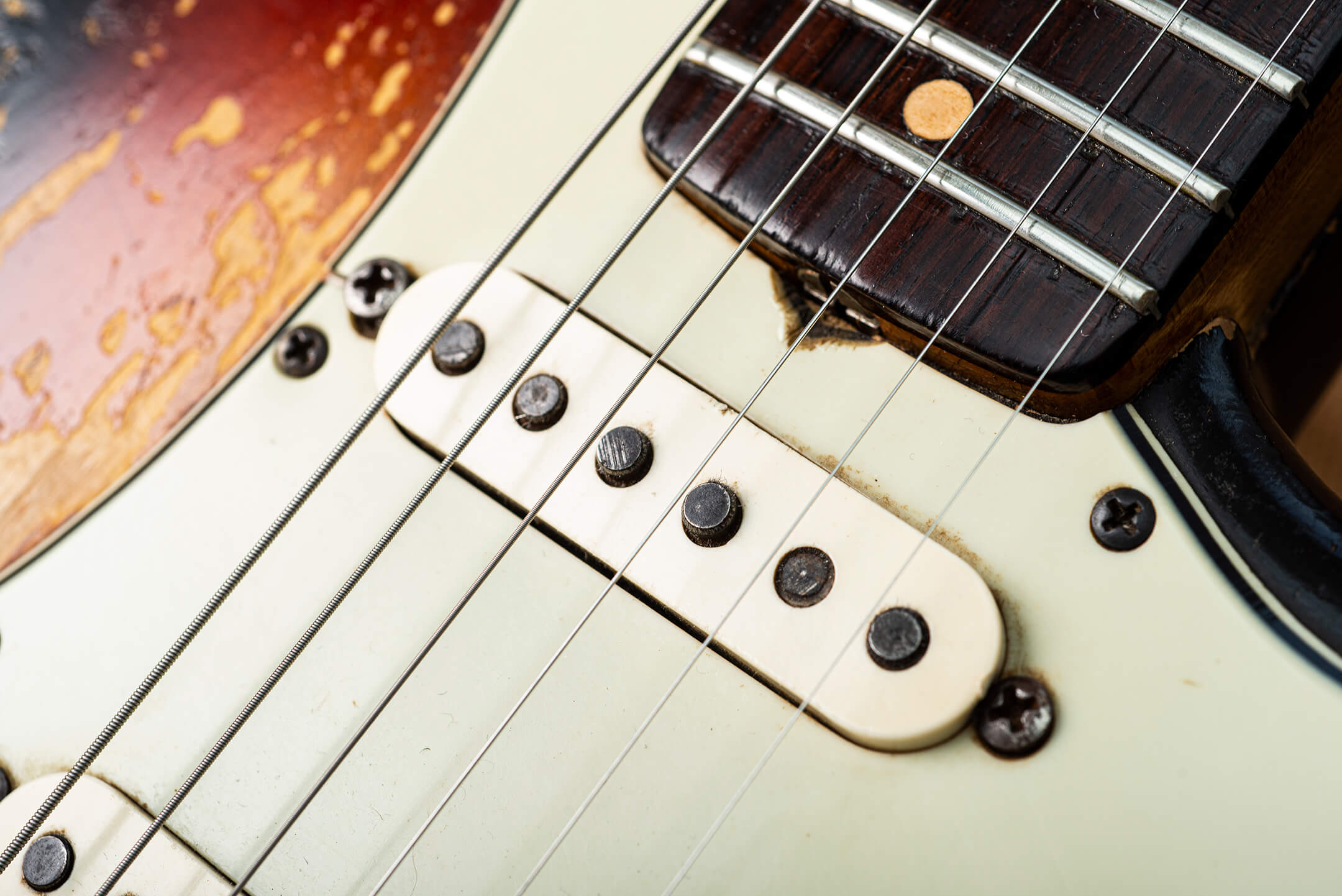
Electronics
Thanks to manufacturer codes and date stamps found on the casings, potentiometers can provide clues to a Stratocaster’s age. Besides solid-shaft 100k units found on the very earliest Strats, Fender used 250k Stackpole and CTS pots. Stackpole and CTS units have 304 and 137 codes respectively. Year and week stamps followed the manufacturer codes, but Fender bought components in bulk, so potentiometers are often older than the guitar itself – or younger if they are vintage replacements.
When it came to tone capacitors, Fender used paper/foil ZNW1P1 ‘phone book’ 0.1uF capacitors until 1961, so-called because of their appearance. The earliest were orange, becoming a lighter shade in 1958. From 1961 Fender used 0.1uF ceramic disc capacitors and the value changed to 0.05uF around the time of the CBS takeover.
Cloth-covered wire was used until the late 1960s and Fender’s wiring style was neat and tidy, with the ground wire from the spring claw connected directly to the jack socket. If the wiring appears messy, it has probably been modified or repaired.
Collectors look for original solder joints throughout because it’s an indication that the guitar’s finish may be original. After all, you can’t respray a body without removing the electronics. Fresh solder joints look shiny, but there are ways to make them look old.
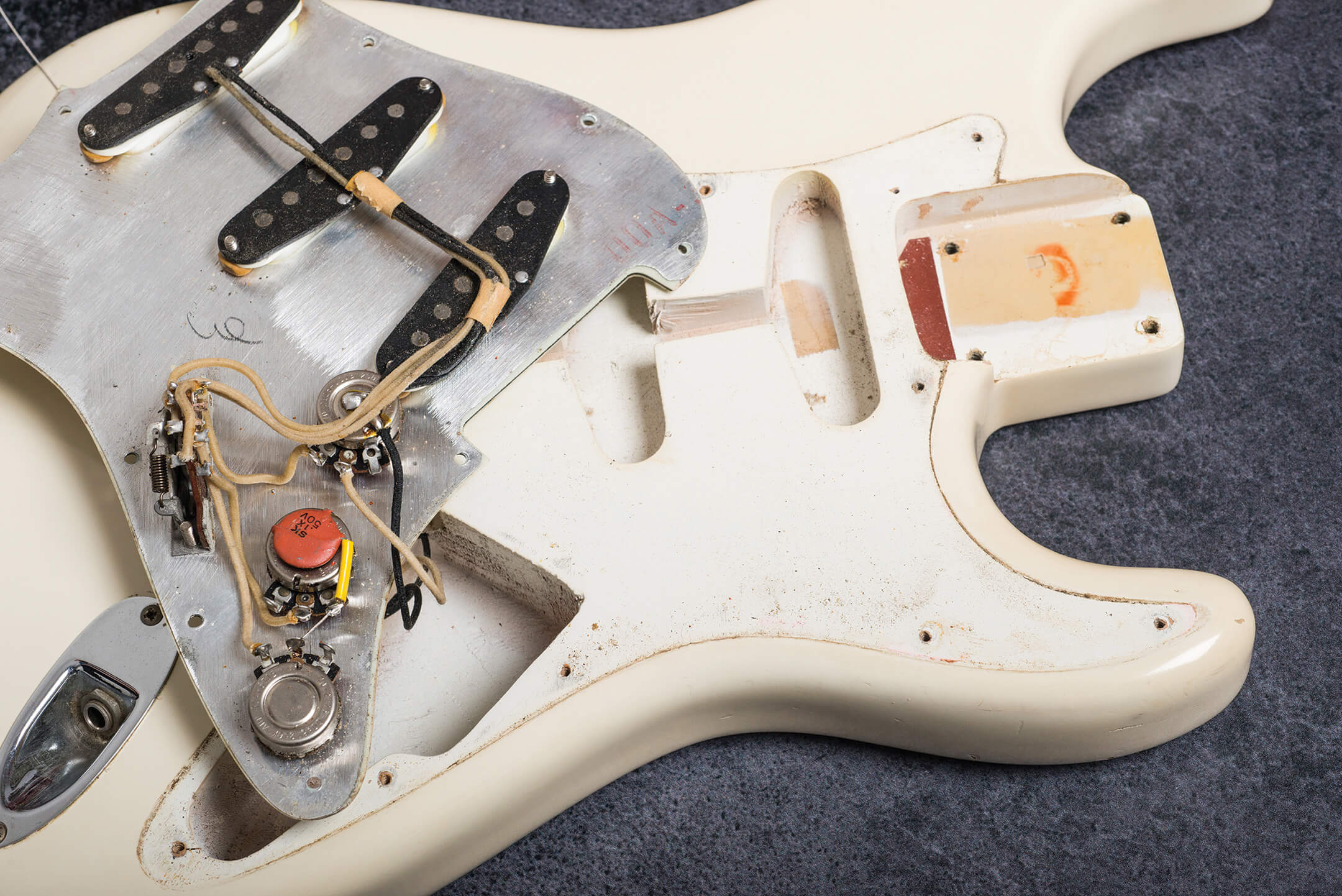
The cloth covering can also be pulled back sufficiently to allow fresh solder joins to be made and then concealed so that all the original solder joints remain undisturbed. Some unscrupulous individuals have gone this far to pass off refinishes as original.
All vintage switches were three-way units made by CRL. Between 1954 and 1962 Fender used the CRL 1452 with three stamped serial numbers and a brown wafer with flat cut sides. From 1963 to 1965, the wafer was a lighter shade with a rounded half-moon shape, and between 1965 and 1973 the centre wheel was changed to white plastic. Many post-’65 switches also have a diamond logo.
Finally, when it came to pickups, Fender used black vulcanised fibreboard flats until early 1964, when the bottom flats became grey. Unlike Telecasters, Strats had staggered pole slugs from the start. The 1954 stagger had a G slug shorter than the D, but they were quickly evened up.
Slug diameter changed too, from 0.2” in 1954 to 0.192” and then 0.187” in 1963. Alnico V replaced Alnico III magnets in 1955 and in 1960 the polarity changed from north up to south up – you can check this using a compass.
The magnet wire changed from copper-coloured heavy formvar to a purple plain-enamel wire during 1964, and resistance readings dropped from the low 6k to high 5k range. Vintage coils were potted in molten wax containing lamp black, so vintage coils and the cloth wiring close to the pickup tend to look dirty.
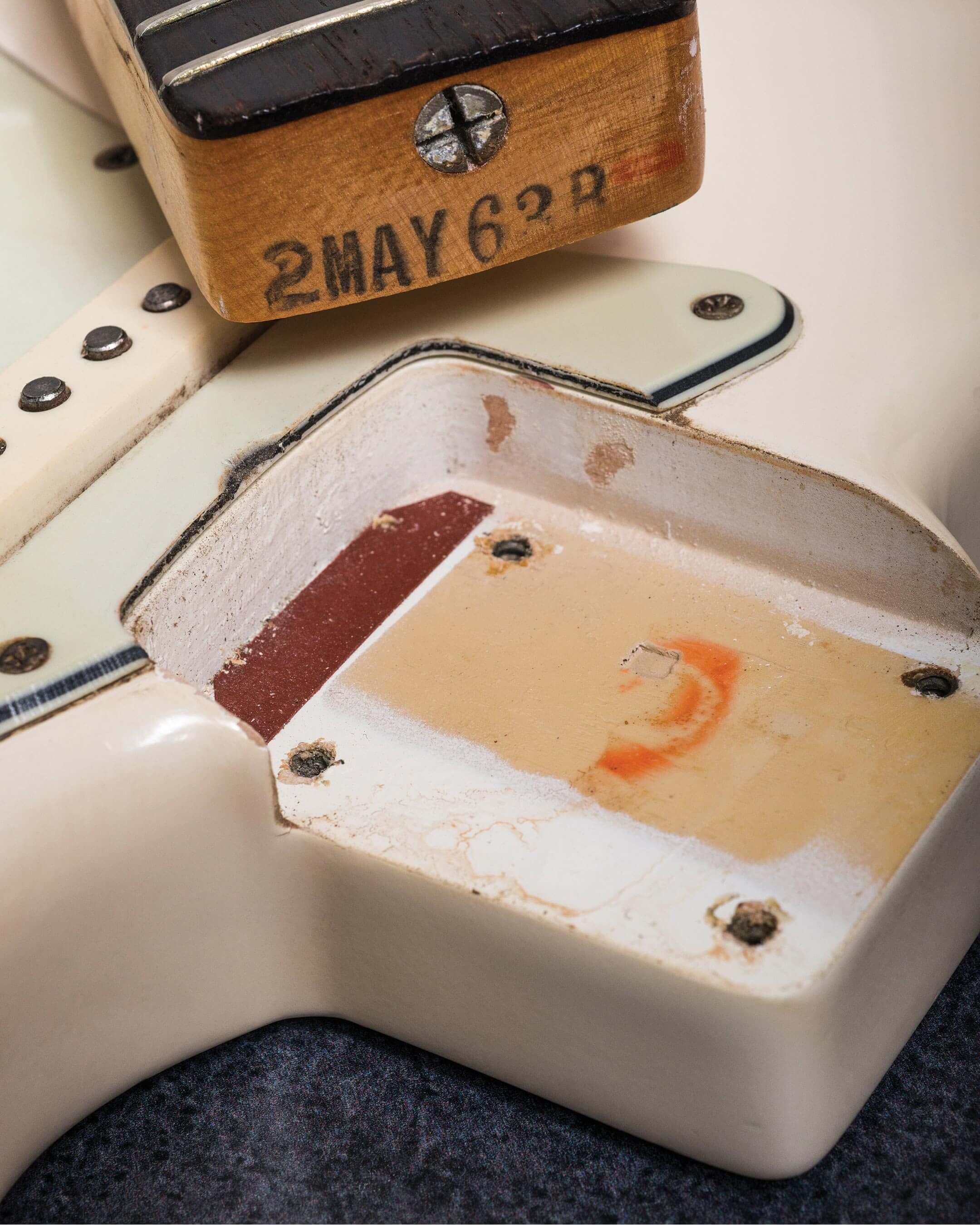
Further reading
Still hungry for more on vintage Stratocasters? Check out a breathtaking collection of original custom-colour Fenders and get plenty of info about some of Fender’s rarest finishes in our close look at some of the highlights of two of the UK’s foremost vintage guitar collectors here.
Go here for a comparison of 1961 and 1963 Strats and here to find out how we restored a heavily modified vintage Stratocaster found in a house-clearance auction by guitarist Chris Buck.
For more guides, click here.
